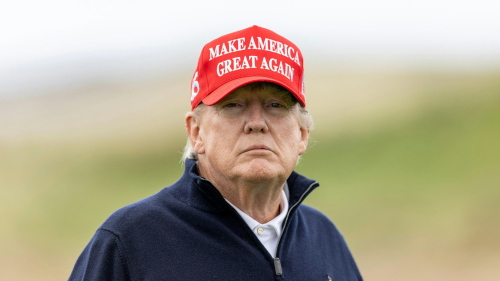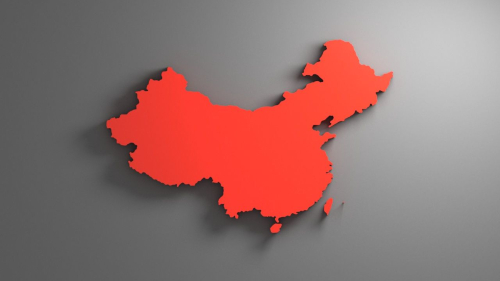Marjory Stoneman Douglas High School
Parkland, FL
4:24 P.M. EDT
THE VICE PRESIDENT: So, let me start by thanking the families for your courage and your bravery and the leadership that you have so selflessly given and demonstrated, born out of inconceivable loss and pain and suffering.
Thank you for the generosity of your time today to spend time with me and my the- — my team and — and to share with us, knowing how extremely painful it is, who your family member, I’m going to say, is and was, and the importance of us remembering. I do believe we have a duty to remember and a duty to bear witness to what happened here.
It is extraordinarily tragic. These were beautiful people who have — I’ve come to know through their family members. They are so much bigger and more than a statistic. They should be so much bigger and more than the subject of politics or gamesmanship.
We’re talking about beautiful people who each in different ways were heroes in the context of their community, be it their family, their classroom, or their lives, everything from — I mean, I’m going to now maybe leave out some, but I’m thinking about all of them — but from who was a extraordinary swimmer and — and received a scholarship to a — a veteran of our armed services to older brothers and younger sisters of their siblings — beautiful people whose lives were tragically taken by an act of violence.
You know, part of what I talked with the families about is the fact that one in five families in America has a family member that has died because of gun violence, that the leading cause of death for the children of America is gun violence.
Some of us talked about the parents of — of children who were lost. It — it wasn’t a car accident. It wasn’t some form of cancer. It was gun violence.
And what I saw, then, here, after I spent time with the families, during the walkthrough of the building where these crimes occurred, is a moment frozen in time — high school classrooms. The desks are still in the configuration they were in on that Valentine’s Day six years ago.
The moment is frozen in time where there was, in a classroom that was known for having a teacher that was pretty strict, the teacher relented to the students who said, “Hey, can’t we be a little bit more informal today, and instead of having the desks lined up in a row, have them pointed to face each other?”
I was in classrooms where, frozen in time, the laptops of that era are still on the desks, which have since gathered dust.
Frozen in time, on some of the desks, the snacks that the students were eating, and on the whiteboard and plastered against the wall, various admonitions that the teacher had clearly given the students — I saw one that said something like, “No excuses allowed” — to tablets and — clearly, where notes and — and homework had been done, frozen in time.
And the families so rightly are so — have so — been so injured by this. Those injuries that in acts of violence like this are seen and obvious and also invisible. The trauma that results from this kind of violence that takes place every day in America and in a profound number took place here six years ago — trauma that, for the most part, though they will try to mitigate the pain, will never completely be healed.
We have to understand the facets of this, also, when we do reflect and review and, dare I say, study what happened here at Stoneman Douglas. And we must be willing to have the courage to say that on every level, whether you talk about changing laws or changing practices and protocols, that we must do better.
The families here have been extraordinary leaders and advocates, I say to them, on behalf of families they may never meet and who may never know their names — advocating for issues like understanding, many of the parents and the — and the families shared with me, that the way that we are — we have constructed schools is based on the only conceivable emergency being potentially a fire, and so, constructing alarm systems and evacuation systems based on a fire alarm where, some of the families shared with me, we’ve not seen — I think I got this right — any major fatality in terms of a student dying from a fire in a school, but, oh, just since this happened, since Parkland, 150 schools shootings, if not more.
We have learned lessons about what we need to do in terms of how we construct schools in terms of the safety of a classroom.
I saw, in this moment frozen in time, the classroom doors where the locks really weren’t where they’re supposed to be if the point is to protect the children, the students, and their teachers.
Looking at it in the context of what we are doing in terms of what are the protocols when there is an active shooter drill and have we trained everyone appropriately.
Thinking about how we can be better in terms of empowering families and communities when there is knowledge that someone might be a harm or create a harm to themselves or others, and are we being smart in terms of how we allow people to share that information so that communities and schools and parents can not only protect themselves but help others.
How are we upgrading our systems? You know, technology has come a long way since most of our schools were constructed. Do we have systems of communication that actually talk with each other technologically?
And if anyone says, “Well, this is a matter of resources,” I’d invite you to really consider the resources in our children and school officials that we have lost because of what has been happening in our country.
And I want to talk specifically as the head of the White House Office on Gun Violence Prevention about what we must do to continue to elevate our collective concern and empathy around the tragedy in a way that we translate it into solutions.
Part of what the President and I have been able to do is invest about a billion dollars into, as of now, about 14,000 new mental health professionals being dispatched to our public schools to be a resource in the school that, hopefully, the way that the protocols are developed will not only be there to react to a concern but will also be there to engage in prevention through intervention and detection, and training those professionals with the information that we actually have that helps people to see the signs and then communicate them by obligation and by responsibility so that we can avoid predictable tragedies.
Red flag laws. Red flag laws are simply designed to allow communities a vehicle through which they can share and have somewhere to share it information about the concern about the potential danger or the crying out for help of an individual, and then let’s get it to them before tragedy occurs.
You know, there are only about 21 states that have passed red flag laws. So, part of why I’m here today is to challenge every state: Pass a red flag law. See how these leaders and these parents, through their advocacy born out of tragedy, have changed some of the laws in this state, including on that issue,
to the betterment of everyone.
Of the states that have passed red flag laws — approximately 21 — only 6 have taken up the offer that we have made through our administration of federal resources to help them with the training and the implementation of these red flag laws.
Of the 21 that have passed red flag laws, I challenge the others: Come on over. We got some resources for you to help you implement the work that you have done that has been the work of a leader on this tragic issue.
The second reason I am here is to announce that today I am launching the national Resource Center for red flag laws. And this national resource center will be a place where we will, through that, provide for training for local leaders on how to use red flag laws and keep communities safe.
So, these are just but some of the ways that we can learn from what happened here. And, of course, as you know, I will continue to advocate for what we must do in terms of universal background checks, an assault weapons ban; what we must continue to do to treat — diagnose and treat trauma in our communities.
And there won’t be complete agreement on all that must be done to address these kinds of tragedies, but there are some that, frankly, to un- — use a colloquialism, are just no brainers.
And one of the points, again, that I will emphasize about today is the red flag law as a tool that can help us address some of the tragedies that we know have occurred and occurred here.
So, with that, again, I will say thank you to the leaders of this community, starting with these families. This school is soon going to be torn down, but the memory of it will never be erased. And let us, through the courage and the call to action of these families, find it in ourselves to consider what they’ve been through as some level of motivation and inspiration for all of us to do more.
Thank you.
END 4:38 P.M. EDT




